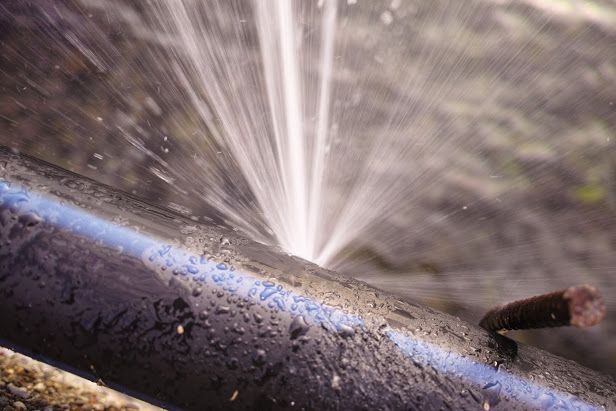 Your old plumbing may be negatively affecting your home, even if a burst pipe hasn’t covered your floors in water. Plumbing upgrades are not a particularly visible way to remodel your home, but they can make your plumbing safer and more efficient. If your home’s plumbing is more than a few decades old, then now may be the time to consider some improvements.
Your old plumbing may be negatively affecting your home, even if a burst pipe hasn’t covered your floors in water. Plumbing upgrades are not a particularly visible way to remodel your home, but they can make your plumbing safer and more efficient. If your home’s plumbing is more than a few decades old, then now may be the time to consider some improvements.
Unfortunately, it can be challenging to understand how old plumbing is impacting your home or your family. Below you’ll find three ways that outdated pipes may present problems.
1. Rusty Water
If your home was built before the 1970s and never received any plumbing upgrades, then you may still have galvanized steel supply lines. The good news is that builders chose galvanized steel lines to replace lead and avoid the severe health issues that it could pose. The bad news is that galvanized supply lines tend to rust relatively quickly, producing brown, rusty water.
Rust from galvanized steel isn’t hazardous to your health, but it can stain everything from your plumbing fixtures to your clothing. You can temporarily deal with this problem by using filters, but this solution will only address the taste and color issues. You will still need to replace your filters regularly, and the corrosion process will continue inside of your pipes.
In addition to creating water quality issues, rusty water is a sure sign that your pipes are functionally degrading. Rust in galvanized steel begins from the inside, and the build-up of rusty material will restrict your supply lines and reduce water pressure. Eventually, the rust will become severe enough to eat through the outer layer of metal and begin leaking. At this point, a replacement will be your only option.
2. Health Issues
Humans have understood the dangers of lead for millennia, but concern over relatively low levels of exposure only took center stage in the last century or two. Despite this, lead pipes were still being used in construction as late as the 1970s. In California, the use of this material was not banned entirely until 1985.
Fortunately, galvanized steel had largely replaced lead plumbing long before regulations eliminated its use. The significant health effects of lead plumbing mean that you should not ignore the potential that your home may contain this material, however. In addition to the pipes themselves, lead may also be present in solder or brass fixtures.
If you aren’t sure about the type of plumbing or fixtures in your home, then the best option is to test your water for lead levels. Home test kits are available, but sending your water to an EPA-certified lab for analysis will provide more definitive results. An experienced plumber should also be able to assess the material used in your plumbing during a thorough inspection.
3. Calcium Scaling
Calcium carbonate build-up (commonly known as limescale) is an issue that can develop in any home with metal supply lines and hard water. This white, chalky substance can be a nuisance when it discolors your fixtures, but it can also reduce the efficiency of older plumbing. Exposure to hard water can cause limescale build-up inside your pipes, restricting water flow and reducing pressure.
While limescale build-up isn’t an issue in non-metallic pipes (such as PEX), you do have options beyond replacing all of your old metal plumbing. Installing a whole-house water softener, for example, can mitigate the problem by removing calcium and magnesium from your water. Pipes that already have large amounts of limescale build-up will still require replacement, however.
Old plumbing can come with some challenges. New pipes or upgraded fixtures can solve these issues and put your mind at ease. Valley Plumbing can inspect your home’s pipes and help you to develop a cost-effective upgrade strategy. Get in touch with us today.

